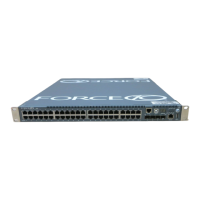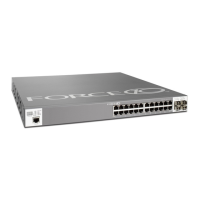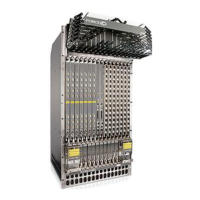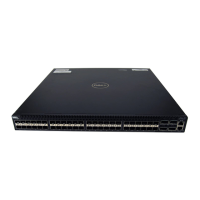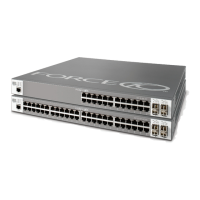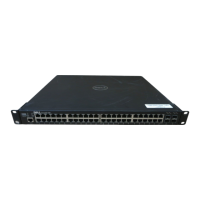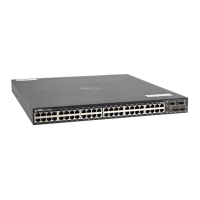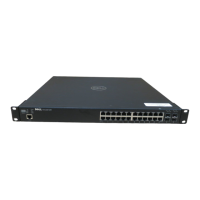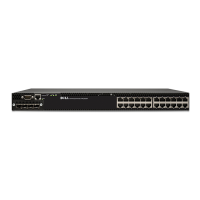Bidirectional Forwarding Detection (BFD) | 131
Establishing a session on physical ports
To establish a session, BFD must be enabled at interface level on both ends of the link, as shown in the
following illustration. The configuration parameters do not need to match.
Figure 7-5. Establishing a BFD Session for Physical Ports
To establish a session:
Verify that the session is established using the command
show bfd neighbors, as shown in the following
illustration
Figure 7-6. Viewing Established Sessions for Physical Ports
The command show bfd neighbors detail shows more specific information about BFD sessions as seen in
the following example.
Step Task Command Syntax Command Mode
1 Enter interface mode interface CONFIGURATION
2 Assign an IP address to the interface if one is not already
assigned.
ip address ip-address INTERFACE
3 Identify the neighbor with which the interface will
participate in the BFD session.
bfd neighbor ip-address INTERFACE
R1: ACTIVE Role
FTOS(config)# bfd enable
FTOS(config)# interface gigabitethernet 4/24
FTOS(conf-if-gi-2/1)# ip address 2.2.2.1/24
FTOS(conf-if-gi-2/1)# bfd neighbor 2.2.2.2
fnC0038m
2/14/24
FTOS(config)# bfd enable
FTOSconfig)# interface gigabitethernet 2/1
FTOS(conf-if-gi-2/1)# ip address 2.2.2.2/24
FTOS(conf-if-gi-2/1)# bfd neighbor 2.2.2.1
R1(conf-if-gi-4/24)#do show bfd neighbors
* - Active session role
Ad Dn - Admin Down
C - CLI
I - ISIS
O - OSPF
R - Static Route (RTM)
LocalAddr RemoteAddr Interface State Rx-int Tx-int Mult Clients
* 2.2.2.1 2.2.2.2 Gi 4/24 Up 100 100 3 C
BFD Session
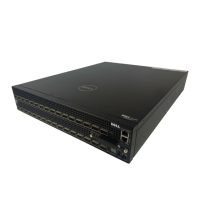
